Thin hair refers to hair that lacks volume and density. Stress and excessive use of heat styling tools are always the main cause of thin hair or fine hair. Because thin hair is challenging to style and manage, many people will choose hair extensions to make them look more good. Here I want to share with you some key information about hair extensions for thin hair, so then you can have a clear understanding of your hair business.
Considerations of sourcing hair extensions for thin hair
The best extensions for thin hair will depend on many elements, such as the state of the hair, personal preference, etc. But some factors you must keep in mind.
Lightweight
Having less weight in hair extensions means the extensions are less likely to slip out and add tension to the hair. It protects the original hair from second damage.
Safety
The application of hair extensions involves direct contact with the human body, making safety a critical concern. After production is complete, it is necessary to test whether the products contain any restricted substances that could potentially harm human health.
Additionally, some hairpieces often use adhesive to attach them to natural hair, and the safety of the adhesive’s use must also be taken into account. Furthermore, wig manufacturers always need to conduct flame-retardant treatment to prevent the risk of fire hazards.
Quality
High-quality hair extensions can reduce damage to thin hair and provide more lasting effects. The quality of the wig is closely related to the materials used. High-quality wigs often use human hair or high-quality synthetic fibers. Human hair is closer to natural hair and blends more easily with your own hair when worn. Synthetic hair helps maintain its shape and color.
5 ideal types of hair extensions for thin hair
Because thin hair is fragile, it’s important to choose extensions that won’t cause additional stress to the hair shaft or follicle. Here are some types suggested of hair extension wholesale.
Hand-tied weft hair extensions

It is the most ideal extension for thin air. It is comfortable, breathable, and causes no shedding. This type is also chemical-free, and fine hand-tied seamed. They are usually used for natural beaded weft attachments. It can seamlessly integrate with natural hair, without over-stretching or breaking the natural hair. They also lie flat on the hair without added bulk or weight.
There is also no adhesive or tape required either, and the biggest benefit is that they can last between 4 to 12 months with proper care and maintenance. In addition, it allows you to delicately change your style, giving it the desired length, volume, and color.
Tape in hair extensions
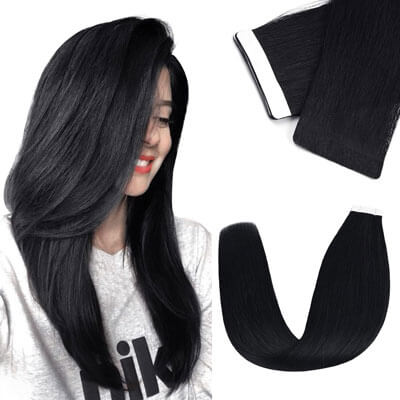
It is another great option for thin hair because each weft is lightweight. It is very thin, and the distribution of hairpieces is even, which will not add excessive weight or pressure to damage fine hair. Tape-in extensions are typically applied by sandwiching two extensions on top of a piece of hair, not requiring any heat to apply. It supports many styles for thin hair, such as long straight hair, braids, curls, and more.
Halo Hair Extensions
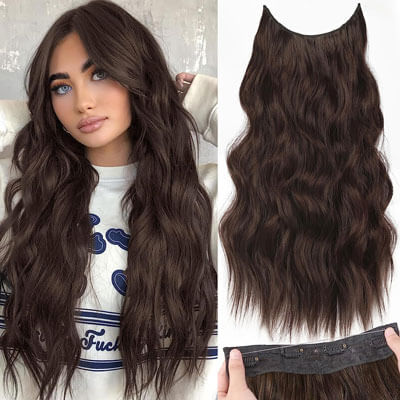
Halo hair extensions come as one piece attached to a clear wire. It sits on the wearer’s crown like a headband, so the hair extension’s weight doesn’t pull against the wearer’s natural hair and scalp. The wearer can easily put it on their heads and hide it with their natural hair. Compared to other wigs, halo hair extensions are one of the least damaging hair extensions for thin hair.
In addition, halo hair extensions can create various styles, such as curls, updos, ponytails, etc.
Nano ring hair extensions
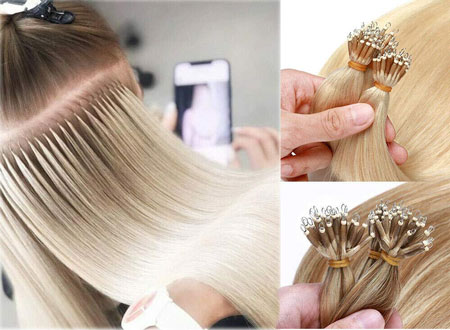
This hair extension offers an exceptional level of subtlety. Nano rings are remarkably tinier, and they match the dimensions of a ballpoint pen’s tip. It makes them an ideal choice for enhancing the length and density of thin hair. Nano rings have the advantage of not using more abrasive methods like adhesive, heat, or braiding. So it is very safe to use.
Moreover, they remain inconspicuous, regardless of your hair type. Positioned closer to the scalp, they remain concealed, conjuring the optical illusion of a naturally abundant and lush head of hair.
Ponytail extension
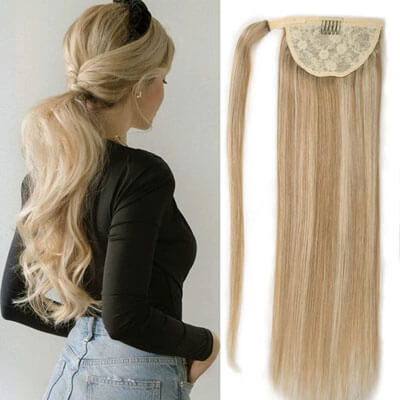
Because fine hair struggles to maintain hairstyles effectively, numerous individuals use ponytail hair extensions to increase the length and fullness, creating a longer and more voluminous ponytail effect. This type won’t cause harm to their natural hair. It can also be easily applied using a simple molding technique and is available in various colors. With proper care, this type of extension can last for several months.
4 hair extensions types to skip thin hair
There are some hair extensions that you should think twice about wholesale. Incorrect hair extensions can put tension on thin or fine hair and may be too heavy if the hair is already fragile and prone to breakage. The following you should avoid when importing hair extensions.
Clip-in hair extension
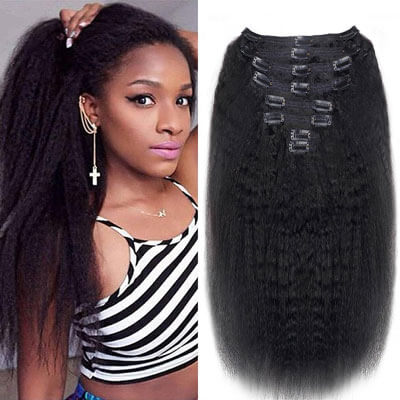
This extension is convenient and cost-effective. But it requires multiple clips to secure the extension onto natural hair, which adds extra weight to the hair. Due to the lack of a strong hair root, there is also a higher risk of slipping or loosening. At the same time, sparser hair might have difficulty fully covering the clips and wefts. Therefore, it will affect the overall natural appearance of the hairstyle.
Sew in weft hair extensions
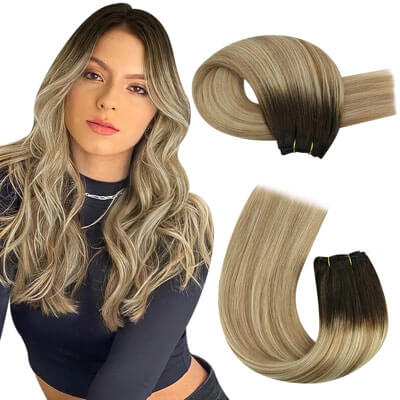
It is also known as weaves, which entails braiding in hair extensions at the scalp. This process requires a strong foundation of natural hair for the braids. If the hair is too thin, it may not withstand the tension from braiding and could potentially result in hair breakage.
MicroLink weft extensions
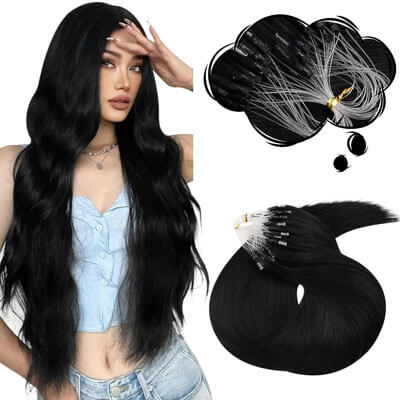
It involves attaching small sections of hair extensions to the natural hair by using tiny metal rings or beads. Due to the need to clamp the metal rings, a significant amount of pulling and tugging is required during both the hair extension attachment and removal processes.
This can subject the natural hair to undue stress, potentially leading to breakage. Moreover, the metal rings cannot be fully concealed, especially in thin hair, which can affect the overall hairstyle’s appearance.
Fusion/bonded hair extensions

Both of these types involve heated adhesive to bond the hair extensions with natural hair strands. Due to the bonding process, the hair comes into contact with the adhesive and heat, which can easily damage fine and thin hair textures. Additionally, the adhesive might not adhere well to finer hair strands.
As a leading sourcing company in China, JingSourcing has helped dozens of clients import and customize hair extensions directly from Chinese factories. Besides thin hair, we also support various types of other hair qualities, such as thick hair and fine hair. You just need to tell us your requirements. We can help you deal with everything occurring in the sourcing process.

Leave A Comment